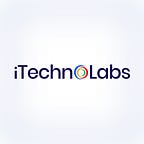What is Software Development Life Cycle Model For Building Apps?
What is Software Development Life Cycle Model?
Software development life cycle (SDLC) refers to processes used to create software. SDLC outlines detailed stages so that software can be created quickly. It outlines the phases involved in developing a product. Plans, creation, testing, and deployment are included in the SDLC phases. As part of the SDLC, the end product is ensured that it meets the quality requirements.
Here are the 5 best Software Development Processes (and how to choose the right one for you)
Developing software requires a series of stages to achieve the desired result. Applications are developed according to models which guide developers. For a correct implementation, different models are required. We have listed a few SDLC models that you can use when developing an application.
Below are Software Development Life Cycle Model Processes
- Waterfall
What it is:
Software development using the waterfall model is an old, traditional method of developing software (also known as the “linear sequential model” or “Classic lifecycle model”). If you think about the Waterfall method in its simplest form, you can imagine that each step of the SDLC is followed sequentially-you must finish each one before moving on. The phases overlap slightly during most practical applications, with feedback and information flowing between them.
This is sometimes called a “plan-driven” method since you must first know everything that has to be done to finish a job. The waterfall is a term used to describe the flow of each segment into the next.
Phases:
- Plan
- Prerequisites
- Design of systems and software
- integration
- Testing
- Deployment
- Support/Updates
Who needs it: Team members who need documentation and rigid structures.
The Waterfall software development process has rigid boundaries and extensive planning requirements, as a result of which it works best when your objectives, requirements, and technological stack are unlikely to undergo radical changes throughout the development process (such as during shorter one-off projects).
In terms of practicality, the Waterfall process is best suited for larger organizations with many stakeholders involved (e.g., government agencies) and many requirements and scope documents to be signed off on before a project can start.
- Agile and Scrum
What it is:
Software development is an iterative and dynamic process that follows the Agile method (and Scrum as its most popular methodology).
An Agile process does not follow a rigid, sequential flow, but rather cross-functional teams can develop usable software after 2 weeks to 2 months of effort by using a fast-paced, rapid development style known as “Sprints.”
The Agile construction method consists of moving fast, releasing often, and responding to user needs, even if they don’t align with your original plans. That means that you don’t require a detailed statement of work or a complete set of requirements before you start the work. By following a specific strategy, you maintain your focus on moving forward in a particular direction but are aware that you may change your path along the way.
It explains a lot more about Agile than this in the Guide to implementing Agile and Scrum. As an example of what it might look like in practice, we have provided a simple example. Take the case of adding X, Y, and Z features to one of your products. The idea of an Agile Sprint is to create a bare minimum that is useful and usable (rather than building everything over months) and then releases it to your customers.
You can react quickly to customer needs throughout the software development process by creating tighter feedback loops.
Phases:
- Backlog of products
- Sprint backlog
- Sprint (Design & Development)
- Complete the software release
- Feedback and validation (add to backlog)
- Plan the next sprint
Who it’s for:
Dynamic teams that update products continuously.
Agile is favored by startups and technology companies due to its dynamic and user-centric nature, especially for continuously testing new products or updating long-standing ones.
In the long run, Agile allows organizations to move faster and test their theories without risking their entire livelihood on a significant release that their users hate as it becomes easier to do minor releases and gather user feedback. Furthermore, as testing usually occurs after each small iteration of the product, it is much easier to track down bugs or revert to an earlier version of the product if something more serious goes wrong.
